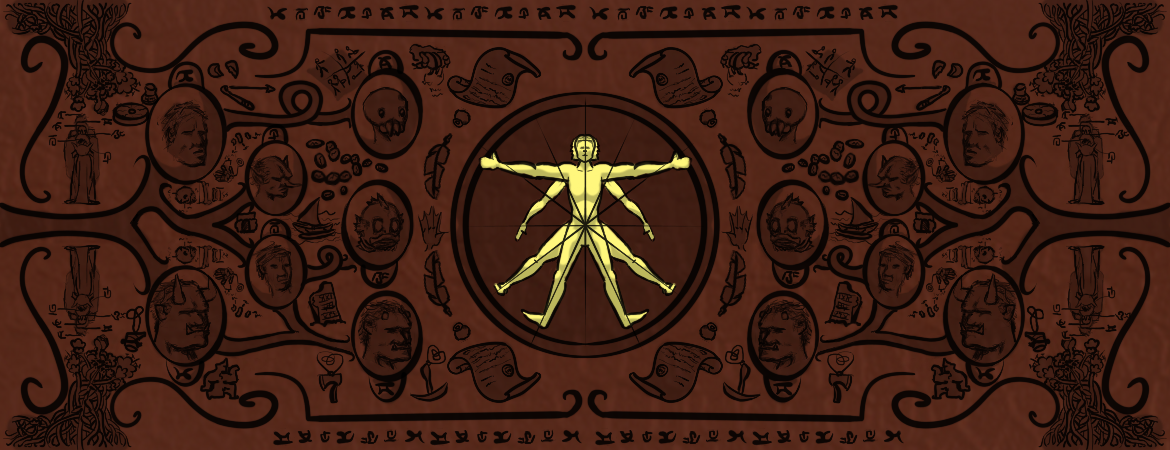Steinwerfen
Bloodmarsh doesn't host much revelry or idleness, but when the virtues of long tradition, utility, and strength training are interleaved with a sport, it has real staying power. This is why the Bighornian sport of Steinwerfen has caught on in the Marsh, even on days other than Rock-Breaking Day.
History
The exact origin isn't known for Steinwerfen, but it's probably pretty boring. The sport is mentioned in a couple of Bighorn runestones, alluding to the fact that a properly-sized building stone was "as big as you can leave it and still throw it over a tree". In the original sport, the arbor was apparently just a tree, but not everybody can hurl like an Orc.
Execution
Divided into three teams, the players disperse, make a plan, and emit from huddle. At a designated signal, either a loud shout or horn call, each team runs out into the fields to lay hold of such large stones as are commonly found in the glacially-tilled valleys of Bighorn and race with them back toward town. Negotiating the streets with their burdens, all come to a pre-set structure, called the arbor, and commence to chucking their rocks over the arbor to create as tight a pile on the opposite side as possible. The teams are each assigned a mark from which to throw distributed around the arbor evenly. With the traditional three teams, this means that nobody gets their heads stoved in. With the ancient setup, only two teams were involved and the game bore a terrible similarity to dodgeball. The game ends when all teams have no rocks left in or about their mark. The winning team is that which builds the tallest pile of stones on the opposite side of the arbor.
Strategy
Since teams can only throw what rocks they can carry to the arbor in a single trip, the best approach is to carry in teams the largest rocks which can be lifted, and to break them into throwable chunks at the mark. However, the larger the chunks thrown over the arbor, the easier to get them to stack. Typical strategies involve designating a player to find and bring an anvil rock upon which to break the larger chunks, and the rest of the team to carry as much as they can in twos or threes. Flat rocks are preferred because they are much easier to break. Sometimes a team will build a preliminary stack on the side of their mark from which to drop the larger chunks on the anvil, increasing the power of their strike and improving the chances of splitting them.Cleanup
Though in southern lands where rocks are more scarce, the stones are reused for the next game or for other Rock-Breaking Day festivities. Traditionally, though, the newly-resized stones are used to build the sturdy stone huts which Bighornians love. The losers then forfeit gifts of food and drink to the winners, which are usually shared at a subsequent feast anyway.Components and tools
The game needs a circular field of maybe fifteen yards' width, a lot of rocks, and an arbor. The latter is usually made of some laths lashed and bent to form a dome about ten feet high.
Participants
At least ten players are needed per team, and more spectacular games are had with even larger teams, as the stacks of rocks at the three targets get much larger.
Observance
This game is played most around Rock-Breaking Day when Bighornians invite their friends to join in, but many towns will have a few other games per year to more or less crowd-source stonecutting for large projects such as bridge-building or laying foundations.
Related Ethnicities
Remove these ads. Join the Worldbuilders Guild









Comments